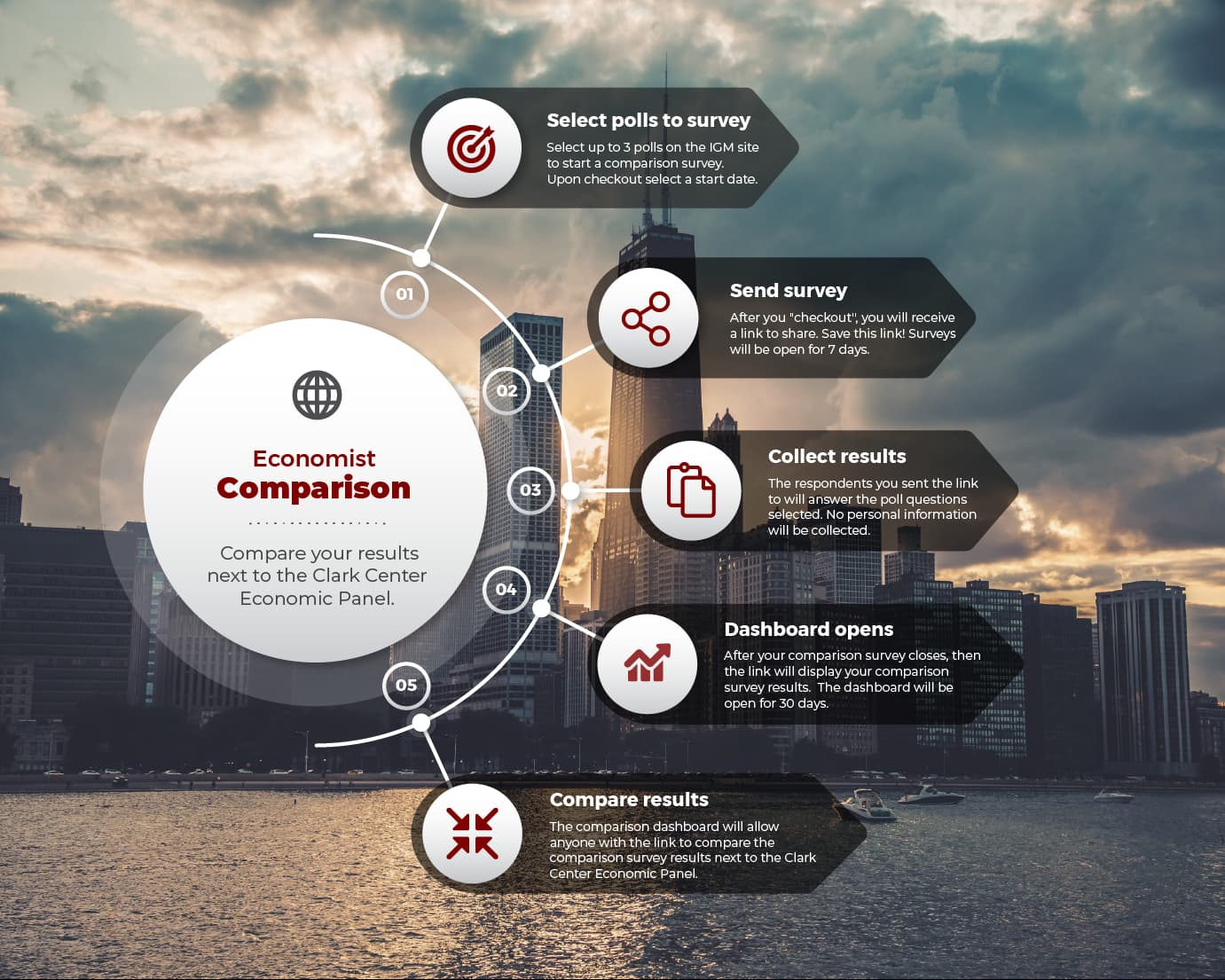The 9% cumulative increase in real US median household income since 1980 substantially understates how much better off people in the median American household are now economically, compared with 35 years ago.
Responses
Responses weighted by each expert's confidence
| Participant | University | Vote | Confidence | Bio/Vote History |
|---|---|---|---|---|
 Daron Acemoglu |
MIT | Bio/Vote History | ||
|
But the same is true for the pre-1980 growth. So this number does NOT understate that growth of median income has declined after mid-1970s.
|
||||
 Alberto Alesina |
Harvard | Did Not Answer | Bio/Vote History | |
|
|
||||
 Joseph Altonji |
Yale | Bio/Vote History | ||
|
Over the 1980-2014 period CPI probably does not fully account for quality improvements or for the value of new goods (e.g., the smartphone.)
-see background information here |
||||
 Alan Auerbach |
Berkeley | Bio/Vote History | ||
|
|
||||
 David Autor |
MIT | Bio/Vote History | ||
|
I think it's more likely than not given secular improvements in healthcare, longevity, technology, and air quality.
|
||||
 Katherine Baicker |
University of Chicago | Bio/Vote History | ||
|
|
||||
 Abhijit Banerjee |
MIT | Bio/Vote History | ||
|
There are gains in health etc. not measured in earnings but also psychological costs of growing inequality and a sense of disappointment.
|
||||
 Marianne Bertrand |
Chicago | Bio/Vote History | ||
|
|
||||
 Markus Brunnermeier |
Princeton | Bio/Vote History | ||
|
|
||||
 Raj Chetty |
Harvard | Did Not Answer | Bio/Vote History | |
|
|
||||
 Judith Chevalier |
Yale | Bio/Vote History | ||
|
Have to factor in changes in transfers, changes in household size, changes in labor force participation and CPI bias.
|
||||
 David Cutler |
Harvard | Bio/Vote History | ||
|
|
||||
 Angus Deaton |
Princeton | Bio/Vote History | ||
|
Likely true, but it not hard to construct arguments that contradict it. For many groups, health is getting worse.
|
||||
 Darrell Duffie |
Stanford | Bio/Vote History | ||
|
|
||||
 Aaron Edlin |
Berkeley | Bio/Vote History | ||
|
Other relevant factors would be: time spent commuting, increase in % of 25-53 employed, hours worked, hours connected to work email at home
|
||||
 Barry Eichengreen |
Berkeley | Bio/Vote History | ||
|
"Understates" yes, "substantially" I revert to uncertain.
|
||||
 Liran Einav |
Stanford | Bio/Vote History | ||
|
|
||||
 Ray Fair |
Yale | Bio/Vote History | ||
|
|
||||
 Amy Finkelstein |
MIT | Did Not Answer | Bio/Vote History | |
|
|
||||
 Pinelopi Goldberg |
Yale | Bio/Vote History | ||
|
|
||||
 Austan Goolsbee |
Chicago | Bio/Vote History | ||
|
so much of our day is spent doing things that didn't exist back then that it's hard to believe the #s fully account for new products
|
||||
 Michael Greenstone |
University of Chicago | Bio/Vote History | ||
|
CPI bias is important even w that in mind, 9% seems a small gain over 35 years & i THINK median family is working many more hours
|
||||
|
Robert Hall |
Stanford | Bio/Vote History | ||
|
Lots of real growth in the top deciles and the bottom deciles. Not so clear at the median.
|
||||
 Oliver Hart |
Harvard | Bio/Vote History | ||
|
Iphones weren't available then suggesting understatement. But both partners often work, which is stressful. This suggests overstatement.
|
||||
 Bengt Holmström |
MIT | Bio/Vote History | ||
|
Depends how "better off" defined. Technology (eg smartphones), medical services, lower crime, etc have increased quality of life broadly.
|
||||
 Caroline Hoxby |
Stanford | Bio/Vote History | ||
|
|
||||
 Hilary Hoynes |
Berkeley | Bio/Vote History | ||
|
|
||||
 Kenneth Judd |
Stanford | Bio/Vote History | ||
|
|
||||
 Steven Kaplan |
Chicago Booth | Bio/Vote History | ||
|
|
||||
 Anil Kashyap |
Chicago Booth | Bio/Vote History | ||
|
No one I know would rather face the 1980 bundle of goods (at 1980 prices) than current bundle, at anywhere near the same incomes.
|
||||
 Pete Klenow |
Stanford | Bio/Vote History | ||
|
The rise in life expectancy alone is worth on the order of 1% per year.
-see background information here |
||||
 Jonathan Levin |
Stanford | Bio/Vote History | ||
|
Difficult question, but life expectancy is up from 74 to 79 years - seems like a substantial gain not reflected in real median income.
|
||||
 Eric Maskin |
Harvard | Bio/Vote History | ||
|
|
||||
 William Nordhaus |
Yale | Bio/Vote History | ||
|
Due to measurement issues e.g. prices, family composition, measures of income, prob understates by >1% py. Add to that price quality bias.
-see background information here |
||||
 Emmanuel Saez |
Berkeley | Bio/Vote History | ||
|
|
||||
 Larry Samuelson |
Yale | Bio/Vote History | ||
|
Yes, because it misses many innovations, but at the same time the upper end of the income distribution is extraordinarily better off.
|
||||
 José Scheinkman |
Columbia University | Bio/Vote History | ||
|
Burkhauser et al. (2011) show faster growth in median post-tax, post-transfer size-adjusted household income including health ins. benefits.
|
||||
 Richard Schmalensee |
MIT | Bio/Vote History | ||
|
The official indices and deflators undervalue quality change and new goods. A small annual bias makes a big difference over 30+ years.
|
||||
 Carl Shapiro |
Berkeley | Did Not Answer | Bio/Vote History | |
|
|
||||
 Robert Shimer |
University of Chicago | Bio/Vote History | ||
|
CPI has improved but is imperfect. Capital income matters, especially for retirees. Mean household size has shrunk from around 3.3 to 2.6.
|
||||
 Richard Thaler |
Chicago Booth | Bio/Vote History | ||
|
Define substantial. Agree that CPI overstates inflation.
|
||||
 Christopher Udry |
Northwestern | Bio/Vote History | ||

